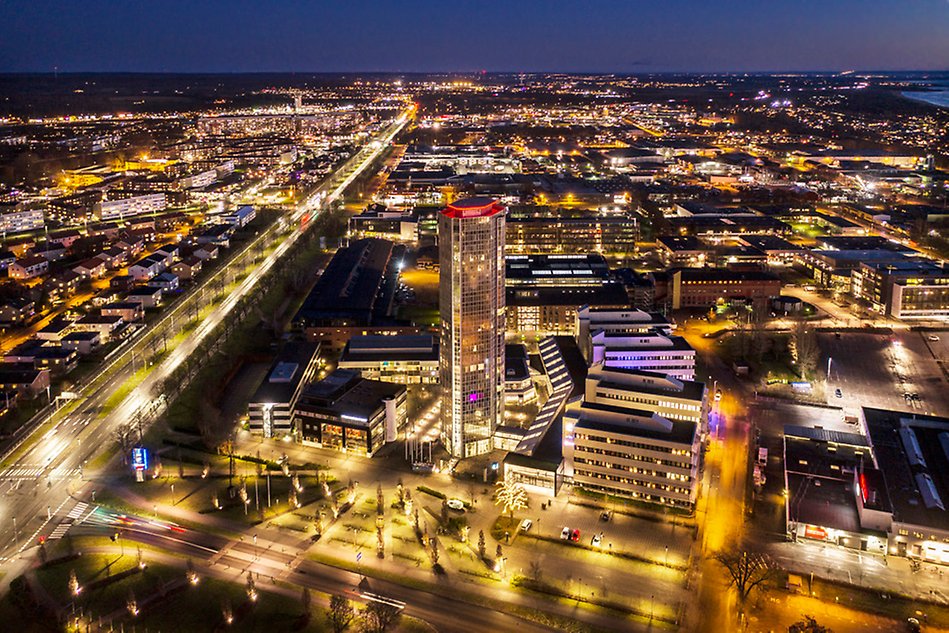About focus area Smart Cities and Communities
Focus area Smart cities and communities prepare people and society for the future. The vision is to be a leading academic enabler for sustainable societies.
A smart city
Halmstad University defines smart cities and communities as cities and communities that aim to be sustainable by using information and communication technologies where it provides added value. The concept of sustainability encompasses economic, social and environmental sustainability – and is directly linked to the 17 sustainability goals in Agenda 2030. Smart cities and communities are not only about technological and digital solutions, but also about behavioural factors and people.
Focus area Smart Cities and Communities.
Small and medium-sized cities
Despite the fact that most people live in small and medium-sized cities, most current research findings and examples of smart cities are related to megacities. At Halmstad University, we focus on the specific challenges and opportunities that exist in small and medium-sized cities. This is in line with the regional position of Halmstad University and Halmstad’s size as a city.
Compared to big cities and megacities, smaller cities have their own specific conditions to take into account, such as limited resources and less economic strength, as well as less knowledge and capacity. At the same time, the advantages of small and medium-sized cities are, for example, less bureaucracy and less complexity. Smaller cities are no less important in driving national and regional growth than larger cities, but it requires solutions that are adapted. Here, the focus area Smart Cities and Communities can contribute to the research frontier.
The six dimensions of the focus area
The focus area’s work focuses on six important dimensions – an accepted way of describing the most important areas in the development of smart cities and communities.
Governance and management
This dimension is about coordination within and between different parts of the city’s governance. Collaboration with stakeholders at the local level is also important. A smart city is also linked to the outside world – both far away and close – as well as to the national and international economy. An example of smart governance is the use of information and communication technologies (ICTs) and digital communication devices as a way for citizens to participate in decision-making and be part of co-created initiatives.
Economy
A smart city should support sustainable economic development. The focus is on resource management through, for example, circular economy and ICT-supported and advanced manufacturing and delivery of services. The smart economy also encompasses ICT-enabled innovation, new goods, services and business models. In addition, it creates ecosystems and smart clusters, for example in digital business and entrepreneurship.
Mobility
“Smart mobility” is about developing sustainable and inclusive transport systems, for example by connecting one or more modes of transport – such as cars, bicycles, pedestrians, trams, buses, trains and metros. The priority is on clean, sustainable, safe and environmentally friendly mobility. Through interconnected systems, vehicles and infrastructure can work together to improve both transport efficiency and safety. Important aspects of mobility are also user behaviors and norms.
Environment
“Smart environment” is about energy, pollution, buildings and resource use. Smart energy includes renewable energy sources, ICT-based energy networks and metering. Pollution includes both the control and monitoring of pollution. Green buildings and urban planning are also important parts of the environmental dimension. The goal is also to use resources efficiently, to reuse when possible, and to replace resources with better alternatives.
People
“Smart people” have e-skills and can work in ICT-based environments – to be able to take part in and live in inclusive and smart cities and communities. The dimension focuses, among other things, on how digitalisation is changing the conditions for teaching and learning, as well as people’s and organisations’ competence to manage digital environments.
Quality of life
The dimension is about improving behaviour, consumption, and lifestyle in the smart city or community. It also includes high-quality housing and accommodation – as well as a safe and healthy life in a city rich in cultural resources. Two factors that are positively correlated with quality of life are social capital and cohesion.


